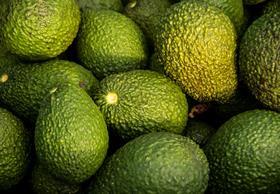
Last week’s visit by South African president Cyril Ramaphosa to Japan has increased optimism that the country’s avocado industry will be granted access to the lucrative Japanese market before next season.
Apart from entry into China, access to Japan would be one of the most significant developments for the South African industry in eastern markets in recent history.
Derek Donkin, CEO of Subtrop, who also attended the Japan summit as part of the South African delegation, said that this year there has been much development after a seven-year effort to make a breakthrough in Japan.
“We are pleased with what has been achieved and president Ramaphosa’s efforts on behalf of the industry provided new impetus,” he said.
Donkin confirmed that, along with the Citrus Growers Association’s Justin Chadwick, industry members of the delegation were able to raise the issue of better access for citrus, as well as expanded entry for table grape varieties other than Barlinka.
“For our avocado industry it will be a huge step to gain access to Japan,' he continued. 'We realise that in this business you cannot count your chickens before they are hatched, but we are quietly optimistic that we will be able to start exporting to Japan next year.”
Japan would represent a new marketing region that will give the industry greater options to develop a new market. “We will concentrate on Hass and we know that it is a sophisticated consumer market which will serve our products well.” Donkin confirmed.
South Africa is in a phase of growth for its avocados. Last year’s 21m carton crop set a new bar in terms of export volumes.
Despite the fact that the crop dropped back to 14.5m cartons in 2019 - the result of it being a so-called 'off' year, which normally follows big crops - the 2020 yield is expected to be considerably higher.
“We have experienced significant new plantings over the past few years and will have a lot more fruit next year,” Donkin noted.
The present season is just about completed, he added, but later regions will supply fruit till December. This will however mostly be sold on the local market.
The lower export crop resulted in a strong market with good returns to growers this year.



